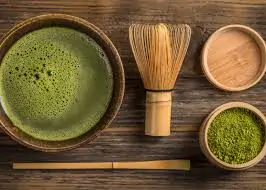
Hibiscus, with its vibrant and captivating flowers, is a plant that has captured the hearts of botanists, gardeners, and enthusiasts alike. Known for its stunning blooms, this versatile plant holds not only aesthetic appeal but also a rich history, cultural significance, and a multitude of uses across various domains. In this comprehensive exploration, we will delve into the world of hibiscus, examining its origins, diverse species, cultivation, medicinal properties, and cultural importance.
Origins and Classification
It’s belong to the Malvaceae family, which includes over 200 species. The genus encompasses both perennial and annual plants, trees, and shrubs. Native to warm-temperate, subtropical, and tropical regions around the world, hibiscus has found a home in a variety of climates, showcasing its adaptability.
One of the most well-known species, commonly referred to as the Chinese or shoe flower. This species, native to East Asia, is celebrated for its large, showy flowers that come in a range of colors, including red, pink, orange, yellow, and white. Other notable species include syriacus, known as the rose of Sharon, and sabdariffa, which is cultivated for its calyces used in the production of hibiscus tea.
Botanical Features
Are characterized by their distinctive trumpet-shaped flowers, often with a prominent central column of stamens. The leaves are typically alternate and have a serrated margin. The size and color of the flowers, as well as the overall growth habit, can vary significantly between species.
Notably, flowers are ephemeral, meaning they bloom for a short period, usually a day or two, before wilting. However, the plant’s ability to produce a continuous succession of flowers ensures a prolonged and stunning display throughout the blooming season.
Cultivation and Garden Varieties
Can be a rewarding experience for gardeners, given the plant’s resilience and adaptability. Depending on the species can be grown as a shrub, tree, or even as a potted plant. While some varieties are hardy in cooler climates, others thrive in the warmth of tropical environments.
Well-draining soil, ample sunlight, and regular watering are essential for the successful cultivation of hibiscus. Pruning, especially for shaping and removing dead wood, is recommended to maintain the plant’s health and appearance. With proper care, hibiscus can flourish, producing an abundance of eye-catching blooms.
Gardeners can choose from a plethora of hibiscus cultivars, each offering unique flower colors, sizes, and forms. Some popular varieties include the ‘Double Pink’ with its densely petalled flowers, the ‘Blue Satin’ known for its blue-hued blooms, and the ‘Diana’ cultivar, which boasts pure white flowers.
Medicinal Uses
Beyond its ornamental value, hibiscus has a long history of medicinal use in various cultures. The calyces of Hibiscus sabdariffa, commonly known as roselle, are particularly prized for their medicinal properties. These calyces are rich in antioxidants, vitamin C, and various minerals.
Hibiscus tea, made from the dried calyces, is renowned for its potential health benefits. Studies suggest that it may help lower blood pressure, reduce cholesterol levels, and possess anti-inflammatory properties. Additionally, the tea is known for its refreshing taste and vibrant red color, making it a popular beverage in many parts of the world.

Cultural Significance
Hibiscus holds significant cultural importance in several societies. In many Asian cultures, the Chinese hibiscus is associated with femininity and delicate beauty. In Hawaii, the hibiscus is the state flower and symbolizes power and respect. In India, hibiscus flowers are offered to deities during religious ceremonies, and the plant is also used in traditional Ayurvedic medicine.
Beyond its use in rituals and ceremonies, hibiscus has found its way into art, literature, and folklore. Its enchanting flowers have inspired poets and artists, and its symbolism is often intertwined with themes of love, beauty, and transformation.
Conclusion
In conclusion, hibiscus is not merely a plant with stunning flowers but a botanical marvel with a rich tapestry of history, cultural significance, and practical uses. From its diverse species and cultivation tips for gardeners to its medicinal properties and cultural symbolism, hibiscus continues to captivate and enrich the lives of those who encounter its beauty. As we appreciate the blooms of this extraordinary plant, we are reminded of nature’s ability to weave together aesthetics and functionality, creating a harmonious and blooming masterpiece.
You May Also Like:




